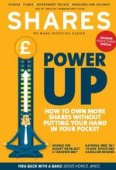Archived article
Please note that tax, investment, pension and ISA rules can change and the information and any views contained in this article may now be inaccurate.
Dealing with new pension and dividend rules

Chancellor Philip Hammond has earned the moniker ‘spreadsheet Phil’ for his reportedly waspish attention to detail. However, his first Budget has been mired in controversy amid accusations a manifesto pledge to not increase National Insurance contributions was flagrantly broken.
Away from this furore two big announcements could have a significant impact on retirement investors. Here, I break down those changes and how you can limit their impact on your retirement plans.
Money Purchase Annual Allowance slashed
No news is usually good news when it comes to pension tax relief. Savers should be delighted to see the Chancellor resist the temptation to follow in the footsteps of his predecessor, George Osborne, by hacking back the main annual and lifetime allowances.
However, the Government is continuing full steam ahead with plans to reduce the annual allowance for those who have taken income from their pension flexibly – known as the Money Purchase Annual Allowance – from £10,000 to just £4,000 from April 2017.
This is different from the annual allowance taper, which gradually reduces the annual allowance for those with an income of more than £150,000.
What are my options?
You can still take up to 25% tax-free from your pension from age 55 and retain the £40,000 annual allowance provided you don’t take anything else. So you should consider spending this before drawing down an income or taking a taxable lump sum from your pot.
If you do trigger the MPAA, all is not lost – alongside your £4,000 pension savings allowance, you still have a £20,000 annual ISA limit from 6 April 2017.
Dividend allowance Less than a year after it was conceived, Hammond decided the £5,000 dividend income allowance was far too generous and announced a whopping 60% cut to just £2,000, kicking in from April 2018.
This is a hugely important change with potentially significant implications for anyone who holds dividend paying investments outside a tax wrapper.
What are my options?
You should review where your dividend paying investments are held to ensure you don’t end up being hit by a nasty tax charge.
If you hold your dividend paying investments in an ISA or SIPP, for example, you won’t pay any tax on the income you receive. If you do go down this route, consider prioritising those investments that are likely to pay the highest dividend (and thus be hit with a tax charge post-April next year) as ones to switch into an ISA or SIPP first.
Tom Selby,
senior analyst, AJ Bell
Important information:
These articles are provided by Shares magazine which is published by AJ Bell Media, a part of AJ Bell. Shares is not written by AJ Bell.
Shares is provided for your general information and use and is not a personal recommendation to invest. It is not intended to be relied upon by you in making or not making any investment decisions. The investments referred to in these articles will not be suitable for all investors. If in doubt please seek appropriate independent financial advice.
Investors acting on the information in these articles do so at their own risk and AJ Bell Media and its staff do not accept liability for losses suffered by investors as a result of their investment decisions.
Issue contents
Big News
Editor's View
Funds
Great Ideas
Great Ideas Update
Investment Trusts
Larger Companies
Main Feature
Smaller Companies
Story In Numbers
- AIM Stocks Ranking
- UK Pharma & Biotech Stocks
- Esure escapes Ogden damage
- 3-month low: Oil slips as US activity ramps up
- 7.9%: Investment trust’s big bet on Sports Direct
- 76%: Percentage of money going into European tech firms by US and Asian investors
- 25%: Ramsdens on the rise
- 500 tonnes: Morrisons is in good shape

 magazine
magazine








